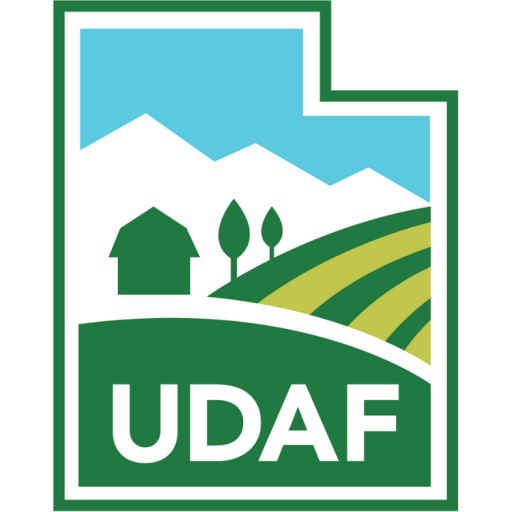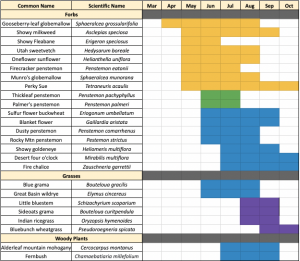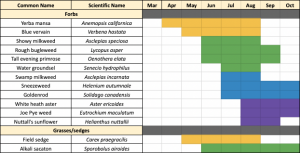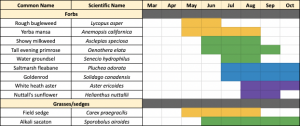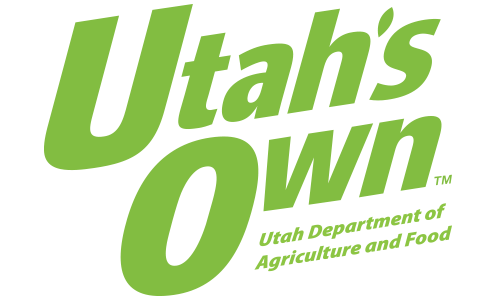Habitat Kits (Live Plants):
Habitat Kits have been designed to both establish and/or enhance pollinator habitat on a variety of project sites. Projects may include (but are not limited to) agricultural lands, urban farms, parks, nature centers, schools, businesses, garden spaces and community spaces. Our program will initially place priority for projects near watersheds and valuable habitat corridors that may be important for pollinator population success throughout the state. Plant species within kits are pre-selected and have been designed to provide optimal seasonal resources that will benefit the greatest number of pollinator species per region.
Habitat kits available for distribution in Fall 2024 contain plants for both the northern and southern areas of Utah based on the project’s regional climate. Upland (suitable for well-draining soils and drier habitats) and wetland kits (suitable for water-holding soils and moist to wet areas) will be available for each region.
Projects may be awarded wetland, upland, or both types of kit depending on project location and need. Each kit is designed to cover approximately 300 square feet to habitat. A minimum of 3 kits will be awarded per project (to cover a minimum of 900 square feet total).
Utah Upland Habitat Kits
The upland habitat kits are composed of a variety of native plant species that provide seasonal blooms across spring, summer, and fall. Species composition will depend on availability but generally consist of the following species and bloom times:
Northern Upland Kit
Southern Upland Kit
Click here to read more about each individual upland plant species.
Utah Wetland Habitat Kits
The wetland habitat kits will include pollinator friendly plant species that prefer moist to wet soil conditions throughout the growing season. Blooms will cover all seasons and provide continuous, diverse food resources for a host of pollinators. Species composition will depend on availability but generally consist of the following:
Northern Wetland Kit
Southern Wetland Kit
Click here to read more about each individual wetland plant species.
Seed Mixes
Seeds are ideal for creating or enhancing pollinator habitats when used alone or in combination with perennial plants. Regionally specific seed packets are compiled yearly for promotional distribution and project-specific needs on a case-by-case basis to those fitting our criteria. Please reach out directly if you have specific questions or needs for seed packets.
Seed packets may contain, but not be limited to a combination of the following native species, pending seed availability:
annual sunflower (Helianthus annuus), blue grama grass (Bouteloua gracilis), common gaillardia (Gaillardia aristata), coyote tobacco (Nicotiana attenuata), desert globemallow (Sphaeralcea ambigua), dusty penstemon (Penstemon comarrhenus), firecracker penstemon (Penstemon eatonii), Great Basin lupine (Lupinus nevadensis), Great Basin wildrye (Leymus cinereus), Lewis Flax (Linum lewisii), Munro globemallow (Sphaeralcea munroana), muttongrass (Poa fendleriana), Nevada showy goldeneye (Heliomeris multiflora), prairie aster (Machaeranthera tanacetifolia), Rocky Mountain beeplant (Cleome serrulata), showy Milkweed (Asclepias speciosa), silvery lupine (Lupinus argenteus), sulfur flower buckwheat (Eriogonum umbellatum), thickleaf penstemon (Penstemon pachyphyllus), Utah sweetvetch (Hedysarum boreale), whitestem rubber rabbitbrush (Chrysothamnus nauseosus hololeucus), winding sego lily (Calochortus flexuosus), yellow beeplant (Cleome lutea)
More information on EACH individual seed species can be found on our Pollinator Habitat Seed Mixes page. The Seed Planting Guide provides guidance on individual stratification needs and strategic planting to help you achieve the greatest success in establishing your pollinator habitat. New species will be added as they become available and are included in various seed mixes.
Click here to return to the main Utah Pollinator Habitat Program page.
